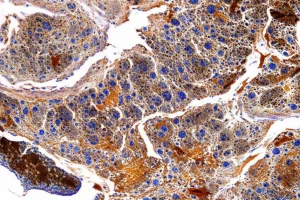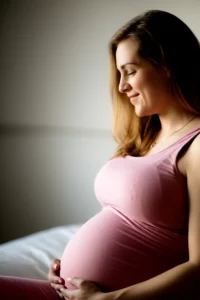Braces, Bones, and Beams: MRI’s New Role in Orthodontics
Hey there! Let’s chat about something pretty cool that happens when you get braces, especially those lower front ones. We all know braces move teeth – that’s the whole point, right? But sometimes, this movement can get a bit tricky, particularly in the lower jaw where the bone supporting the teeth can be a little thin. This can sometimes lead to things like gum recession, which nobody wants.
Traditionally, to get a really good look at how teeth are moving in 3D and what’s happening with the bone and gums underneath, dentists and orthodontists have used something called CBCT (Cone-Beam Computed Tomography). It gives amazing detail, but it uses X-rays, which means radiation. For growing kids and teens who might need scans over time, minimizing radiation is a big deal.
So, our team got thinking: could we use something else? Something that gives us that detailed 3D picture without the radiation? Enter MRI – Magnetic Resonance Imaging. You might know it from scanning knees or brains, but what about teeth?
Getting Down to Business: Why Look So Closely?
Orthodontic treatment often starts with what we call the ‘levelling and alignment’ phase. We use flexible wires to straighten out crooked teeth. Sounds simple, but putting that wire in creates some pretty complex forces on each tooth. These forces depend on how crooked the teeth are, the wire material, and even friction between the wire, the brackets, and the little ties holding them together. This can sometimes push the front teeth forward more than we’d ideally like, especially in folks with naturally thin bone and gum tissue. This ‘proclination’ (teeth tilting forward) is linked to a higher chance of those gum and bone issues we mentioned.
Understanding exactly *how* teeth move in living people during treatment is super important. We need to know how the forces we apply translate into actual tooth movement and how the surrounding tissues react. While lab tests and computer simulations are helpful, they can’t fully capture everything that’s going on inside your mouth – like saliva, how your gums and bone respond, or even the forces from biting and chewing.
CBCT has been a game-changer for seeing tooth movement in 3D, giving us a much better picture than old 2D X-rays. But, because of the radiation, we’re a bit limited in using it for regular check-ups, especially with younger patients.
MRI, on the other hand, doesn’t use radiation. It’s already used a lot in dentistry for looking at soft tissues, infections, and even tooth roots. Recent developments, like special dental MRI coils, have made it possible to get better images of hard tissues (like bone) too, within a reasonable scan time. MRI measurements have shown to be really reliable and match up well with CBCT for certain things. But, nobody had really used dental MRI to follow tooth movement *during* orthodontic treatment before. That’s where our little study comes in!
Our Little Adventure: What We Did
The main goal of our pilot study was to see if we could create a standard way to use MRI to measure the 3D movement of those lower front teeth during the first five months of orthodontic treatment. Our secondary goal was to see what happens to the gum and bone tissue around these teeth during this initial phase.
We invited teenagers aged 12 to 18 who needed orthodontic treatment and had crowding in their lower front teeth. They came to the clinic at the Medical University of Vienna. If they met the criteria (needed braces, had crowding, no claustrophobia, etc.) and agreed to participate (along with their parents), they were in!
Each participant had an MRI scan of their lower jaw *before* starting treatment (we called this T0). Then, they got their braces on – standard brackets and wires designed to start straightening things out. Five months later, they came back for a second MRI scan (T1) using the exact same settings. Important note: we took the wires and any metal ties off for the MRI scan and put them back on right after. This helps avoid issues with the MRI signal.
We initially had 13 patients lined up, but unfortunately, we had to exclude three because the MRI images weren’t clear enough due to the patient moving during the scan. This is a known challenge with MRI, especially with younger folks who find it hard to stay perfectly still for several minutes. So, our final group for analysis was ten patients (six girls, four boys), with an average age of just over 14.
Peeking Inside: How We Measured
After getting the MRI scans, we imported them into special 3D software. We ‘superimposed’ the T1 scan onto the T0 scan for each patient, lining them up perfectly using stable points on the lower jaw (like the chin and jaw angles) to create a consistent reference plane – kind of like drawing a stable floor to measure everything from.
Then, we got down to the nitty-gritty measurements:
- Tooth Position: We defined the long axis of each tooth (a line from the tip of the root to the biting edge). We measured the angle between this axis and our stable jaw plane – this told us the tooth’s inclination (how much it was tilted forward or backward). An increase in this angle means the tooth tilted forward (proclination). We also tracked the 3D position of the root tip (the apex).
- Tissue Dimensions: We measured the thickness of the gum tissue at two points: just below the gum line (free gingiva thickness, FGT) and just above the bone crest (supracrestal gingiva thickness, SGT). We also measured the thickness of the bone on the cheek side of the tooth at three different levels below the bone crest (ABT2, ABT4, ABT8 – 2mm, 4mm, and 8mm down). Finally, we measured the height of the bone (ABH) and the gum tissue (GH) relative to our stable jaw plane.
To figure out how the root tip moved forward or backward (bucco-lingual displacement), we used a clever trick. We drew a circle that matched the curve of the lower front teeth and was parallel to our stable jaw plane. Then, we projected the root tip’s position from both T0 and T1 onto this plane and measured how the distance from the center of the circle to the root tip changed. This gave us a measure of how much the root tip moved towards the cheek or tongue side.
All these measurements were done by one experienced examiner to keep things consistent. To make sure our measurements were reliable, we had the same examiner re-measure some scans after a few months (intra-rater reliability) and had a second examiner measure the same scans (inter-rater reliability). The results? Excellent agreement – our measuring method was solid!

The Big Reveals: What We Found
After crunching all the numbers from our ten patients (60 incisors and 20 canines), we saw some significant changes during those first five months of treatment:
- Tooth Movement: The lower front teeth, on average, tilted forward (proclined) by about 2.9 degrees. The root tips also moved backward (lingually) by about 0.45 mm.
- Tissue Changes: The gum thickness just above the bone (SGT) slightly decreased. The bone thickness deeper down (ABT8) actually increased, but the overall bone height (ABH) decreased slightly, and the gum height (GH) increased slightly. The gum thickness right at the gum line (FGT) didn’t change significantly overall.
When we looked closer at the different types of teeth:
- Incisors: These guys did most of the heavy lifting, proclining by a significant 3.8 degrees and their root tips moving back by 0.61 mm. The bone thickness deeper down (ABT8) increased around them, but the bone height (ABH) decreased notably.
- Canines: These didn’t change much in inclination or root tip position during this phase. Their bone height also didn’t change significantly.
We also looked for connections between how the teeth moved and how the tissues changed:
- Teeth that tilted forward more tended to have thinner gum tissue at the gum line (FGT). This was particularly true for incisors.
- More forward tilting was also linked to increased bone thickness deeper down (ABT8), especially for canines.
- Around incisors, as they tilted forward more, the bone height (ABH) decreased more.
- The root tip moving backward (lingually) was linked to the tooth tilting forward (buccally), but the root tip movement itself didn’t seem to impact the surrounding tissues as much as the tooth tilting did.
- Interestingly, teeth that started off tilted backward (retroinclined) tilted forward significantly more during treatment compared to teeth that were already tilted forward (proclined).
- Teeth that tilted backward during treatment (reclined) showed an increase in gum thickness at the gum line (FGT), while those that tilted forward (proclined) showed a decrease. Proclination was also linked to a greater reduction in bone height.

Putting It All Together: What Does It Mean?
So, what’s the takeaway from all these numbers? Our study confirms that during the initial phase of straightening crowded lower front teeth, the incisors tend to tilt forward significantly. This movement isn’t just about the tooth itself; it has a real impact on the surrounding bone and gum tissue. The decrease in bone height we observed, especially around the incisors, is something we need to pay attention to, as thinner bone crests are a risk factor for gum recession.
Our findings about proclination align with previous studies using other methods like cephalograms or CBCT, although the exact amount of movement can vary depending on the initial crowding and treatment goals. The fact that canines didn’t move as much as incisors in this initial phase also matches what others have seen.
The correlations we found between tooth tilting and tissue changes are really important. It suggests that the way a tooth moves – particularly how much it tilts forward – directly influences what happens to the bone and gum supporting it. This highlights the delicate balance between tooth movement and the health of the surrounding tissues.
Our method for tracking root tip movement using that circular sketch parallel to the jaw plane is a bit different from previous studies, which often used 2D X-rays or measured movement relative to the palate. While the root tips didn’t move a huge amount in our study, the fact that their backward movement was linked to forward tooth tilting suggests a ‘controlled tipping’ type of movement, where the crown moves forward more than the root tip.
Looking Ahead: The MRI Promise and the Bumps in the Road
This pilot study was a success in showing that dental MRI *can* be used to measure both tooth movement and surrounding tissue changes in 3D, offering a radiation-free alternative to CBCT for monitoring during treatment. That’s a big win for patient safety, especially for younger patients needing multiple scans.
However, it’s a pilot study, and like any first step, it had its limitations. Firstly, our group was small – just ten patients. While it gave us valuable insights, we’d need much larger studies to be really confident that these findings apply to everyone. The lack of statistically significant changes in some measurements around the canines might just be because we didn’t have enough canine data points.
Secondly, we focused mainly on tilting and forward/backward movement. Teeth can also rotate or move up and down (intrude/extrude), and while we didn’t specifically plan for those movements in this initial phase, they can still happen and influence the tissues. Future studies should definitely look at these other types of movement too.
Thirdly, and this is a big one for MRI, motion artefacts were an issue. Three patients’ scans weren’t usable because they moved too much. Keeping perfectly still in an MRI scanner can be tough, especially for kids. Finding ways to minimize motion will be key to making this method more practical for routine use.
Finally, we only looked at the first five months of treatment. Orthodontic treatment usually lasts much longer, and tissue changes can continue or even reverse over time. Longer follow-up periods would give us a more complete picture.
Despite these challenges, our study demonstrates the feasibility of using MRI. It opens the door for more research. We can now explore how different types of orthodontic treatment (like using aligners vs. braces, or extracting teeth vs. not) affect tooth movement and tissues using this radiation-free approach. We can also look at other measurements, like tooth rotation or vertical movements.
Ultimately, the goal is to better understand how orthodontic forces impact the delicate structures supporting our teeth so we can provide safer, more predictable treatment and minimize risks like gum recession. MRI looks like a promising tool to help us get there!

Source: Springer







